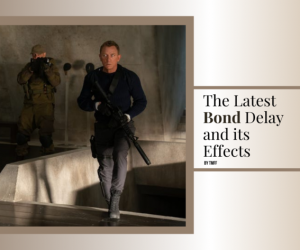It was a rainy and cold October evening in Glasgow, back in 2015, when I decided to set forth to the cinema. The roughly 7-minute walk offered me the distinct privilege of making decisions based on nothing in particular. I had time aplenty to make up my mind and change my mind halfway through the journey, and the tall Cineworld had always spoiled me in terms of choice. A super-sized poster of Daniel Craig holding his pistol with an ubiquitously familiar James Bond fashion stared at me as I was crossing one last intersection and making my way toward the entrance. I walked in eager to get a ticket for the film whose title evoked the least hint of familiarity, and, most importantly, painted a blank canvass with scintillating ardour. I picked ‘The Lobster’ because under ‘directed by’, there was a Greek name completely unfamiliar to me.
Walking into the allotted cinema room, the ambiance was exactly as I had hoped it to be – only a handful of people randomly distributed across the rows of seat, maintaining with a self-imposed discipline a sea of quiet. The aura of nervous tranquility foretold the unfolding of a differential sort of experience – one that would not be disturbed by noisy teenagers who had decided they should have done something else the moment they walked in, or by the distinct brand of idiots who chat on their phones during at least half of the film. This was not a crowd for a mainstream cinematographic experience, after all. Yes, there were a few traitors in our midst, who promptly departed when a few graphic elements got too much for their PG-rated action-packed usual experience. I was relieved by this, though, and had Yorgos Lanthimos been there, I’m sure he would have taken it as a compliment.
The most outlandish of premises
A man, accompanied by his dog – whom he later refers to as his brother – checks into a hotel. After the usual pleasantries, coupled with an additional interrogation which includes aspects such as sexual orientation and past relationship experiences, he is given 45 days to find a partner. Failure to do so would result in prompt transformation into an animal of his choice. I found it immediately enchanting how lightly The Lobster takes all these premises, how benevolently it weaves them into the status quo, all without making a tingle of excessive fuss. It was particularly the dichotomy between the relentless hedonistic pursuit and the disenchanting lethargy of the pacing which peaked my enthusiasm.
Then there’s Dogtooth, which earned Yorgos Lanthimos his first Academy Award nod. The action is centred around a Greek family, in which the parents force their offspring to live completely closed off from the rest of the world, and abide by their own rules. While that may not sound entirely outlandish in its own right, their method of parenting does: they tell their children that they cannot leave the house’s premises until a specific tooth falls off (i.e. never), brainwash them into thinking airplanes flying over are just minuscule plastic toys, that cats are the most dangerous predators in the world, and ascribe entirely different meanings to a variety of words.
Lastly, there’s The Killing of a Sacred Deer, written partly as to mirror an Ancient Greek tragedy by Euripides, Iphigenia at Aulis. In this piece of classical literature, King Agamemnon finds his naval forces stranded on shore, unable to set sail for the Trojan War because Goddess Artemis felt wronged by him, and thus prevented his departure. In the end, he is forced to sacrifice his daughter as a form of moral ‘payment’. In Lanthimos’ film, Steven Murphy, a surgeon, is faced with an incomprehensible reality when his children gradually become paralysed, with subsequent checks showing nothing to be wrong with them. The mysterious occurrence is revealed to somehow stem from Martin, a troubled young man whose father had died during a surgery performed by Steven. He is instructed to sacrifice one of his children, and failure to do otherwise would cause his family members to become unable to move, stop eating, start bleeding from their eyes, and finally die.
A stylistic mastercraft
Highly remarkable is the leisure journey that is needed to go beyond the apparently outlandish premises, and face the overarching themes in all their splendour. Lanthimos doesn’t weave an incomprehensible foray of experimental nature, nor does he admonish audiences in a veiled critique sort of manner, such as how Darren Aronofski undertook work on his brilliant Mother. He is, above and beyond, a storyteller. His plots (often written alongside good friend Efthymis Filippou) are rather facile in structure, navigate around the danger of obfuscating their core thematic with murky divergences, and evolve mostly in terms of gradual shifts alongside character dynamics. He seems to have mastered the art of contexualising and conventionalising a non-sequitur to the brink of genius. The main theme scrutinised is either existential in nature (Dogtooth), revolves around finding one’s role and meaning (The Lobster, The Favourite) or is targeted at overcoming an obstacle (The Killing of a Sacred Deer). Stylistically, the director largely crafts a particular brand of idiosyncrasy through out-of-the-box narrative threads, rather than visuals – except in The Favourite. His newest film makes astute use of the fisheye lens format to create an otherworldly effect. But even in this case, the visuals do not overwhelm viewers, running hysterically amok, basking in an experimental impetus. Lanthimos brings about neither the dreamlike forcefulness of a David Lynch creation, nor does he flirt with unconventionality and art the way a Lars von Trier project usually does. What’s ultimately most important is that his creations exude pride in the niche they craft for themselves with perfunctory enthusiasm.
Sound has a deep significance, and evokes meaning primarily through the juxtaposition of stark contrasts. This includes often contrapuntal use of score, and deadpan delivery of dialogues in The Lobster and The Killing of a Sacred Deer, instead of accentuating dramatic appeal through maudlin displays. What this gimmick achieves is that it allows distinct elements – such as the context and the narrative, or the visuals and the audio – to partly negate each other’s core meanings, not allowing them to develop fully in an expected manner, but instead unfolding alongside a slightly more nuanced rhetoric. The veracity of this arrangement leads its effects to become more unquestionable, and immediately warrants a sense of mild confusion, which does not bewilder, but instead opens up the senses and lessens the starkness of the contrast between the elements. In a certain way, it eases the process of interpretation of the on-screen eccentricity, making it both more digestible and more likely to be accepted for what it is. For instance, The Favourite utilises its largely baroque and classical soundtrack (Bach, Handel, Schubert and Schumann) very much to the same denouement that Ruben Östlund uses the accordion version of Vivaldi’s Summer to dramatic effect in the snow-covered environments of his masterpiece, Force Majeure. In similar fashion, The Favourite uses light, colour and movement through physical space in order to elicit a metaphoric effect which often seems to target the subconscious.
A means of social critique
Despite the aforementioned other-worldliness, Lanthimos and Filippou work with social issues that are sadly a common symptom of today’s society, and are in fact readily observable in our tangible existence. While Dogtooth could perhaps be interpreted as a critique of overprotective parenting, I largely constructed my own interpretation as a lens through which to view totalitarianism. By establishing a repressive micro-climate which naturally runs its course and degenerates into a plurality of negative consequences, both intended and unintended, Lanthimos toys with the aforementioned stigma. As desired by the parents, their children remain completely oblivious to the real world, but they likewise ‘rebel’ by watching forbidden movies, engaging in physical violence against each other, as well as resorting to incest. The final scene is very telling in rapport with totalitarianism’s long-term outcomes. Unbeknownst to the others, the elder daughter knocks out some of her teeth with a dumbbell, then hides in the trunk of her dad’s car, who drives to the factory where he works. Although the girl finds herself, for the first time in her life, outside the restrictive borders which had been artificially traced for her, she is unable to escape. She is physically in the wide, free world, but because of the locked trunk, she remains a prisoner of her repressed background. It’s a situational effect of largely visual nature, but one which assumes a heightened importance and substance in its symbolic garb rather than its bare attire.
In The Lobster, Yorgos Lanthimos mostly explores the frail, baseless nature of many relationships, especially since the onset of technology. Nowadays, apps such as Tinder work on a simple algorithm of like or dislike, whereas dating apps equate potential with similarity, there being a directly proportional relationship between number of common characteristics and match percentage. The film’s characters feel forced by a higher authority (which can from an angle be interpreted as social pressure) to start a relationship with another person, even if the basis is something as absurd as ‘we both get nosebleeds from time to time’. In other situations, it leads to characters simulating certain traits, feelings or emotions in order to check the similarity box. In the end, the main character’s love interest becomes blind, and in an effort to retain similarity (rather than using their different senses in a complementary fashion), he stands in front of a bathroom mirror, ready to pluck his eyes out with a steak knife. And just like Dogtooth, The Lobster can also be interpreted as a political critique. The hotel forces individuals into finding a partner, engages in propaganda in order to convince them of this dire need, and resorts to a system of punishment if a transgression is detected. A very similar system is in place for the loner community that takes refuge in the woods, but instead prohibits all romantic involvement. They are both diametrically opposed forms of extremism, pushing each other further and further away from a middle point. This polarity is readily apparent in real world politics, where right wing extremism pushes its opponents constantly toward the extreme left, and vice versa, thus making factions drift further and further apart from a collective understanding.
Finally, there is slightly more veiled or generalist social critique on display in his later films. In the Killing of a Sacred Deer, Steven initiates his role by trying to take rational decisions to help his family. However, when rationality undeniably becomes out of the question, he still seeks precise, mathematic means to deal with tragedy. When deciding which of his two children to kill in order to save the other, he even visits their school principle in order to objectively compare their grades and future potential in life. This perhaps is a nod to the excessive pursuit of either ‘black’ or ‘white’ solutions, transformed into an inherent norm in present society, in no small part due to the excessive role that technology has carved for itself. In The Favourite, most of the actions undertaken by Lady Sarah and Abigail are rooted in influencing behaviour in order to capture the attention of Queen Anne in sycophantic fashion, as they slyly coerce her in their respective intended directions. The absence of truth is a recurring characteristic of most of these tribulations, revealing the complex array of politics behind almost each and every plan and line of dialogue, personal or otherwise. Seeping doubt about the nature of truth highlights a nature of intertwined conundrums for the characters Lanthimos carves. However, his methods for societal construction have been subjected to variegated tests with nil fallacy – regardless of the social context he pursues, he always succeeds in crafting the most impactful dynamics and lasting thoughts.
Final thoughts
Although hopefully still in its early days, the work of Yorgos Lanthimos expand in a multiplicity of layered plains of political psychology and multifarious sociological constructs, thus effecting an amalgamation of intertwined elements, contrasts and uncomfortable ubiquity. He does not merely throw a rock at the surface of the inky sea of politics, sociology and psychology, hoping to determine the formation of a few ripples which eventually die down. Instead, he launches headfirst in the aforementioned sea, dives underneath, then resurfaces and non-haphazardly splashes water over the puzzled audience. The result fiddles within a space that is more than a mere form of cinematographic abjuration. Lanthimos is unconcerned with the hard facts or science behind his stories – such as how one can turn human beings into animals, or how a peculiar illness unfolds by merely being willed by someone, and without showcasing any clinical symptoms. Consequently, the Greek director time and time again masterminds works of an indomitable alienation from the stale, stereotypical and self-congratulatory norm by highlighting a frail balancing point that evokes neither mindless optimism, nor eternal angst and despair. It’s nothing less than marvelous. Lanthimos is well aware that what he makes is art, and art sometimes warrants no explanation. It just is.

















인계동스웨디시
I needed to thank you for this excellent read!!
Hellen
Neat post.